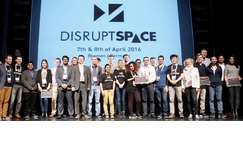 Issue #3(9) 2016
Issue #3(9) 2016
Suffering from tooth pain? Then you will normally turn to a dentist for help.
 Issue #3(9) 2016
Issue #3(9) 2016
Microgravity and space research has long held a fascination for anyone wanting to float weightlessly around a spaceship while simultaneously performing ‘off-world’ experiments.
 Issue #3(9) 2016
Issue #3(9) 2016
The first Disrupt Space summit was held in early April in Bremen, Germany, attracting 200 entrepreneurs and decision makers from 19 countries, all keen to use space to solve global industry and sustainability challenges.
 Issue #3(9) 2016
Issue #3(9) 2016
Paolo Ferri continues his unique insider’s view of this ground-breaking mission and its development from concept through to fruition.
 Issue #3(9) 2016
Issue #3(9) 2016
When NASA flew the first men to the Moon between 1969 and 1972 it was for footprints and flags.
Dry immersion, which is a ground-based simulation model of prolonged conditions of microgravity, is widely used in Russia but is less well known elsewhere.
The exploration of space and extra-terrestrial bodies has always been an incentive for significant scientific and technical breakthroughs.
The problem with electric propulsion and advanced concepts is that the rate of implementation is so glacial it tends to stifle innovation. The perspective, ‘We won’t need that for at least XX years so why work on it?’
The European Space Agency (ESA) is an organisation continuously planning the impossible. Future missions and applications are first outlined when they are still well beyond the current edge of the technology envelope.
The space industry is ripe for change and aging space architectures must be updated to meet the dynamic nature of the modern world.